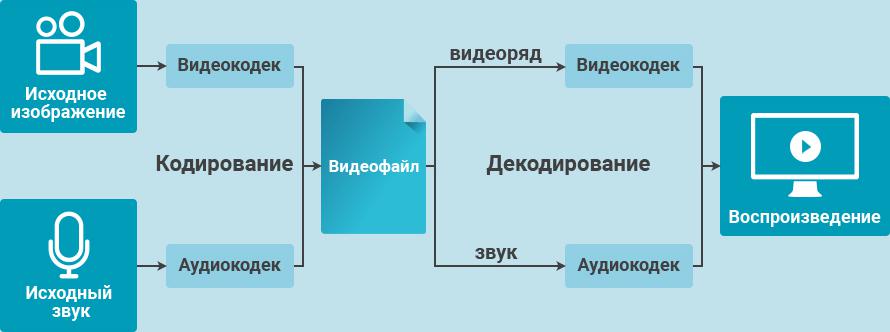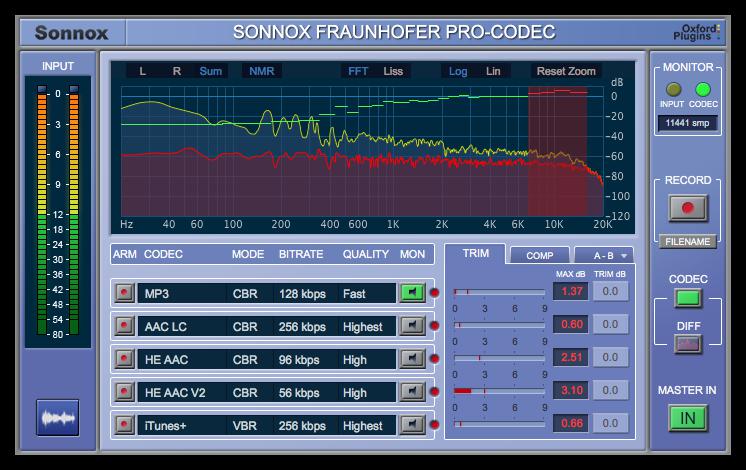Most modern users, who have tried to listen to music or watch videos on their computers at least once, have encountered the fact that in order to open certain types of files in the system, it’s not enough to have only a software player installed that is designed to play files of one format or another, additional tools must be installed called codecs. What codecs are in the general sense of the word, almost everyone guesses, but only a few have a clear understanding of this issue. This means that a full explanation should be given on this subject, touching not only on the main issue of describing such tools, but also how they work and why they were created.
What are codecs?
To begin with, the very notion of “codec”, used today to describe such a toolkit, is based on the combination of parts of two other terms - the Coder and the DECoder (in the English interpretation of CODEC). Speaking about what codecs are, the conclusion suggests itself: these are special programs or sets of programs that allow you to encode and decode multimedia files (mainly audio and video).
How does it all work?
But let's see how it works. It is believed that the main purpose of sets of codecs is the ability to play multimedia files in different formats (and there are so many that you can’t list them all). It is clear, after all, that not every software player is capable of opening absolutely all formats, all the more so as more and more new ones constantly appear, and technologies for converting the contents of audio or video files are constantly being improved. But what is this transformation?

Media files themselves are too large. Think of at least the previously used audio standard in the form of the WAV format. A three- or five-minute clip could occupy about 100 megabytes, which made its storage on any storage media extremely inconvenient. The same can be said about the previously used AVI video format. Over time, special tools appeared that made it possible to reduce the initial size of such files by compressing or encoding with or without loss of quality. Actually, the initial content turned out to be packed into a special container, as it was for archives. An encoder is used for packaging. But the decoder can extract data from the compressed container file for subsequent playback.
How is encoding and decoding?
Now let's see what codecs are in terms of converting the size of multimedia files. Video technology often uses redundant data removal technology. For example, a user takes some kind of landscape on a camera at a speed of 30 frames per second, but the camera’s position does not change, as well as in the landscape there are no cardinal changes either. In the same five minutes, nine thousand identical images run up, which form the video sequence when saved. It is precisely due to the removal of such unnecessary frames that a significant reduction in volume is achieved.

With audio, the situation is somewhat different, since in this case, for example, frequencies can be cut out beyond the limit perceived by a person and, as in the case of the MP3 format, the so-called perception coding is applied when frequencies indistinguishable by the human ear are removed from the original file. In some cases, the bit rate may also be converted. At the same time, coding with lossy quality and lossless is distinguished.
Windows Media Playback Issues
In general, all the processes associated with encoding and decoding audio and video are much more complicated. As for the Windows operating systems, in spite of all their universality of use as the main platform, they do not have their own means to perform such actions. Therefore, you need to install codecs additionally. And this absolutely does not depend on the player used, unless it itself provides for the installation of the necessary encoding and decoding components.
In addition, native Windows players (standard or classic media players), even if the system has installed sets of codecs, some multimedia formats may not play, and for the reason that they simply do not focus on them (do not support). Thus, you have to choose the optimal player option (which is usually observed).
How to view installed components?
Of course, some of the most necessary set, including codecs (Codec Pack), may be present in the system. But how to find out what exactly is installed, and what else needs to be installed additionally. On systems like Windows XP, you can view the information you need in the most common “Device Manager”. On systems of a rank higher, such information can be found in the system information section (msinfo32).
If you look at the multimedia item in the component section, you can just see the audio and video elements developed by Microsoft (for audio, the MP3 codec from Fraunhofer will be additionally specified).
What codecs for Windows is better to install?
Now let's move on to the selection of components necessary for installation. Since the most popular set today is the K-Lite Codec Pack, the codecs present in it should be installed. There is only one problem: which set to choose? You can, of course, give preference to the standard, basic or full version, however, according to most experts, the best option would be to install the kit, which presents absolutely all known codecs, K-Lite Codec Mega Pack.
During the installation process, pay attention to the point that it is not worth using the recommended installation. It is better to note in the list of codecs and decoders everything that is. The action is not mandatory, but never know when these components can come in handy?
Used Players
Finally, having dealt with the main issue, we will pay a little attention to multimedia playback software. The fact that native Windows players are no good is not even discussed.
As a player, as they say, for all occasions it is better to use software players like VLC. Such players reproduce everything that is possible, have many additional features and very subtle user settings.
If you take into account only listening to music, many users prefer the Jet Audio media combine. In addition to the usual player, there are also tools for ripping the contents of audio CDs (CD Rip), burning music to blank discs, listening to online radio, etc. However, they don’t argue about tastes, so everyone chooses a program to their liking, especially that there are plenty of them today (and not only for stationary systems, but also for mobile platforms, including, by the way, the necessary sets of encoders and decoders).